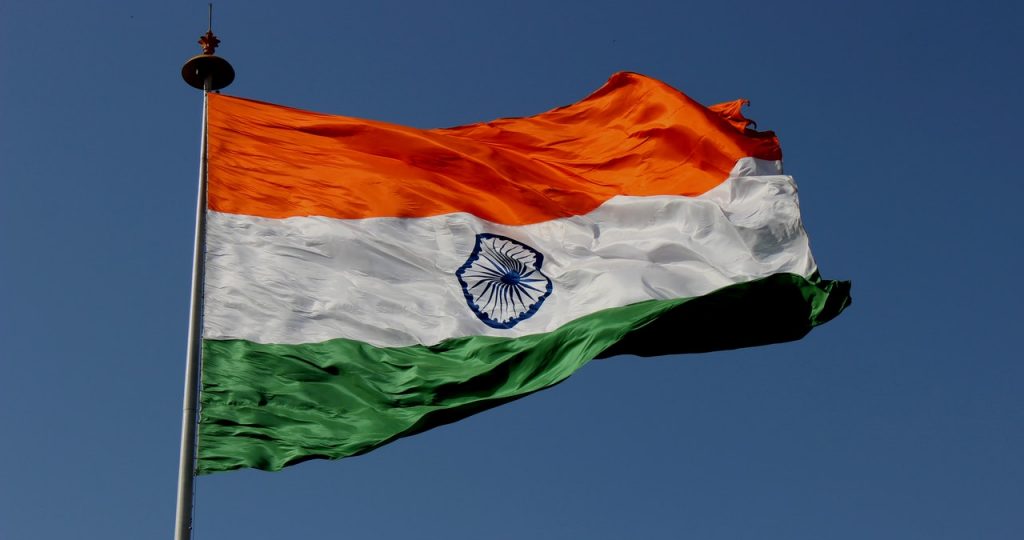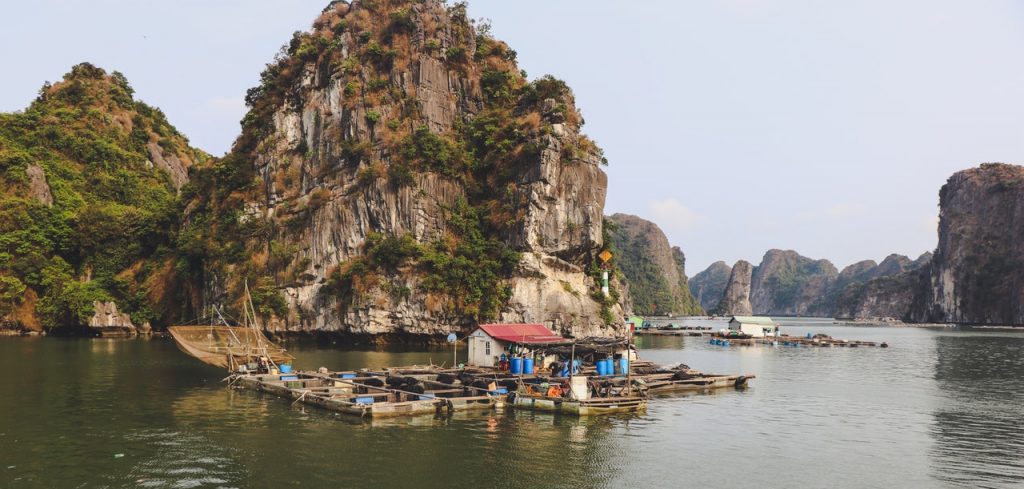TOP 10 Fastest-Growing Countries in the World
The numerous blockades and restrictions necessary to combat the spread of the covid-19 pandemic in 2020 have resulted in a difficult year for residents of all countries. The actual losses and suffering cannot be fully understood in numbers, but all the measures restricting travel, suspending economic activities and bans have led to the economic crisis.
The advent of vaccines and simulation packages, along with 2021, bring a glimmer of hope that will help open up borders, restore jobs, and revitalize production and exports. The forecasts for 193 countries from 2021 are optimistic. It will take longer for nations and their people to heal actually, despite growth rates reflecting the relative health of the economy.
The optimism is reflected in the forecasts of the International Monetary Fund (IMF). After shrinking by 3.5% in 2020, the IMF expects the world economy to grow by 5.5% in 2021 and 4.2% in 2022.

1. Libya
According to the World Bank, Libya is classified as a higher middle income economy. It is an oil-rich country that is a member of OPEC. It has one of the highest GDP per capita in Africa. In 2020, Libya was ruled by two conflicting governance systems operating under separate budgets, with western Libya and western Libya under a National Agreement (GNA) government and the remainder under the control of the Libyan National Army (LNA). For most of 2020, the country’s economy was in ruins as the 9-month oil blockade that began in January 2020 severely weakened the economic sector with oil fumes. According to World Bank, Libya counts on oil and gas for over 60% of aggregate economic output and over 90% of both fiscal revenue and merchandise exports. Despite exacerbated economic problems by covid-19, Libya made progress on both the political and economic fronts in late 2020. Presidential and parliamentary elections are scheduled for 2021. Oil production is forecast to push this economy forward. Despite emerging uncertainties, significant recovery is expected if current growth sustains. After a 60% decline in 2020, Libya’s economy is expected to grow by 130% in 2021. GDP is expected to grow to over $ 24 billion in 2021
2. Macao SAR
It has been a Special Administrative Region (SAR) of the People’s Republic of China since December 1999. It is classified as a high-income region by the World Bank. The main contributor to its economy is the gaming industry, which dates back to the 16th century. By introducing new investors and operating models to the local market in 2002, the MSAR government liberalized the gaming market. At the end of 2020, 41 casinos were operating in Macau, employing nearly 60,000 people. Macau’s gaming revenue has sometimes even exceeded the Las Vegas Strip, making it the largest gaming city in the world in recent times. This stable, small economy runs an open economic policy. The Asia-Pacific region has one of the lowest tax systems and a high per capita income.The tourism sector accounts for about 48% of Macao’s GDP. Per capita income was $ 81,1156 in 2019. which means a decrease to USD 36,350 in 2020. due to the contraction of the economy by 56% from USD 55 billion (2019) to USD 24 billion. To revive the economy, the government announced a round of the simulation package in March 2021. Macao’s economy is expected to rebound by 61% in 2021 with the stimulation and recovery of tourism, making it the second fastest growing economy in 2021. GDP is expected to grow to $ 39.45 billion in 2021, and will exceed $ 73.46 billion by 2026.
3. Maldives
The island country in the Indian Ocean is best known for its tourism. It consists of 1,192 islands and the population is spread over 185 islands. About a quarter of Maldives’ GDP is directly dependent on tourism. Fishing and other commercial activities are other major factors contributing to its GDP. The Maldives was visited by over 1.7 million tourists in 2019, and in 2020 there was a decrease by as much as 67.4%. This is because to combat the spread of covid-19, the government closed the borders from late March to mid-July 2020. The size of GDP decreased by one third from USD 5 billion in 2019 to less than USD 4 billion in 2020. According to the World Bank’s estimates based on household data, it has been shown that the poverty rate has increased from an estimated 2% in 2019 to even 7% in 2020. Analysts’ forecasts predict that along with the recovery in tourism, the Maldivian economy is expected to grow to USD 4.5 and reach 18.87% in 2021. The Maldives are projected to exceed the $ 7 billion mark by 2025.
4. Guyana
As it turns out, few countries managed to avoid the economic contraction in 2020. Guyana is one of them. Even though it is a middle-income country and has one of the highest emigration rates in the world. The country is characterized by dense forests, fertile crops and rich natural resources. The country’s main exports include gold, rice, wood, shrimp and bauxite. Guyana is one of the 20 largest holders of crude oil and natural gas in the world. It is predicted to be one of the world’s largest oil producers by 2025. The country has one of the fastest growing economies in the world with an expected increase of 16.39% in 2021. According to forecasts, its GDP at the level of USD 5.76 billion in 2020 is expected to increase to USD 7.25 billion in 2021. Then reaching double-digit value by 2023. Its per capita income will be $ 7,327, rising to $ 9,192 in 2021 according to estimates. And by 2025, it could even reach $ 15,000 in per capita income.
5. India
Based on economic surveys covering 132 countries, India is expected to experience the fastest economic growth among these over the next 5 years.The country was hit hard by the covid-19 pandemic and, thanks to the severe lockdowns last spring, infection rates have plummeted in recent months. A national vaccination campaign is underway, and recent economic signs – i.e. PMI readings and trading data – are encouraging. Consumption, investment and exports are rising nowadays. This will stimulate growth in the years to come. Recently announced structural reforms, such as the goal of privatizing state-owned banks, allowing greater foreign participation in the insurance sector, and market-oriented agricultural reforms, create the conditions for growth. India is one of the fastest growing economies in the world, worth trillions of dollars.
 At the end of 2019, the decision was made to withdraw from the Regional Comprehensive Economic Partnership (RCEP) – a free trade pact recently agreed between ASEAN countries, Australia, China, Japan, New Zealand and South Korea – that may complicate the external sector somewhat. While the recent spike in COVID-19 cases has added some uncertainty to the short-term domestic growth outlook, India remains a compelling growth story.
At the end of 2019, the decision was made to withdraw from the Regional Comprehensive Economic Partnership (RCEP) – a free trade pact recently agreed between ASEAN countries, Australia, China, Japan, New Zealand and South Korea – that may complicate the external sector somewhat. While the recent spike in COVID-19 cases has added some uncertainty to the short-term domestic growth outlook, India remains a compelling growth story.
6. Bangladesh
This country has survived the covid-19 crisis quite well so far. Although last year’s growth was driven by lower clothing exports and a strong inflow of remittances and the recovery in industrial production contributed to the recovery in recent months. Rapid export growth and stronger domestic demand should drive the economy in the future. Bangladesh has favorable demographics: the success so far in lowering fertility rates has resulted in the dependency ratio falling sharply in recent decades, supporting productivity and increasing public money. Bangladesh now ranks 41 as the world’s largest economy, and forecasts suggest the size of the economy could double by 2030. Unfortunately, the slow progress in vaccination poses a threat. And also the biggest challenge Bangladesh faces is how the country ensures that the fruits of growth and development reach the people at the bottom of the economic pyramid.
7. Rwanda
The economy of this country has come a long way. Rwanda aspires to become a Middle Income (MID) country by 2035 and then High Income (HIC) by 2050. It aims to pursue this aspiration through a series of seven-year National Transition Strategies (NST1), supported by specific sectoral strategies aimed at achieving the Sustainable Development Goals. Rwanda has achieved good economic and social performance under the NST1 that followed the implementation of the two five-year economic development and poverty reduction strategies EDPRS (2008-12) and EDPRS-2 (2013-18). The increase averaged 7.2% over the decade to 2019. while the growth of the domestic product (GDP) per capita grew at a rate of 5% per year. A sharp reduction in economic activity came in 2020, when blockades and social distancing measures were critical to controlling the covid-19 pandemic. By contrast, unstable fiscal positions, low national savings and costly energy pose the risk of a worsening economic situation. The country’s impressive development in recent decades has been largely led by Paul Kagame, and the end of his term has raised uncertainty about the economic future.
8. Vietnam
In recent years, Vietnam has been one of the top performers in East Asia. It was driven by a stable political climate, low labor costs and a relatively skilled workforce. It owes its great success to attracting foreign direct investment, especially in the electronics and clothing sectors, which are developing extremely fast. The country is also an attractive base for companies looking to relocate from China due to trade disputes between the US and China. It has signed many trade agreements increasing market access for its goods, including recently RCEP and FTA with the European Union. Vietnam dealt with covid-19 by swiftly eliminating the virus in the country. This allowed the economy to develop at one of the fastest pace in the world last year.

9. Cambodia
The rapidly growing sectors of clothing and construction have stimulated economic activity in recent years. By contrast, the 2020 pandemic hit the economy severely and likely contracted it significantly due to falling income and lower income from tourism. The Cambodian economy should return to a strong growth path this year as the impact of the pandemic weakens and FDI remains strong. However, the downside risk is posed by strained ties with the EU – a key clothing export market – and an increased twin deficit. While the pandemic has hit all industrial exports, exports of electrical parts, vehicle accessories, bicycles, rice and other agricultural commodities are increasing. With the relaxation of social distancing measures, domestic economic activity is gradually returning to normal. Consumption is partially supported by government intervention, while inflation has been low.
10. Spain
Spain plays a relatively important role as a member of the European Union and the World Trade Organization. It has been recognized as one of the most important economies in the world. Unfortunately, within a few years it was bogged down by numerous crises. Economic disasters such as the 2008 global financial crisis and the debt crisis in the euro area have left the Spanish economy with long-term obstacles that the Spanish government still has to overcome. The method of low imports and high exports, which was initially implemented after the global financial crisis, allows the Spanish economy to prosper and become more profitable. Spain has become one of the largest exporters in the world as its exports have reached pre-crisis levels and have shown steady growth over the years. In 2014, Spain was even among the countries with the highest GDP in the world. According to forecasts, after a sharp decline in 2020. Spain is set to rebound with 5.9% GDP growth in 2021. A series of stringent containment measures to combat the pandemic stopped economic activity, turning the economy into one of the worst-hit in Europe. The tourism sector, which accounts for around 12% of the Spanish economy, has been hardest hit. The president presented the Plan for the recovery, transformation and resilience of the Spanish economy. The plan provides a map for modernizing the Spanish economy, restoring economic growth and creating jobs. The plan draws inspiration from the United Nations 2030 Agenda and the Sustainable Development Goals and aims to not only rebuild Spain from the COVID-19 crisis, but also prepare for the decade ahead. Conclusion
While 2019 is the most recent annual data available for these countries, the COVID-19 pandemic has had a major impact on economies across the world. Because it has slashed energy prices, cratered tourism, lowered trade volumes, and shuttered stores due to quarantines, countries have seen record-breaking declines in GDP. While many economies have begun to recover in the third quarter of 2020, most have not yet recovered to pre-pandemic GDP levels.